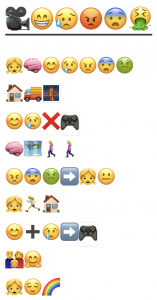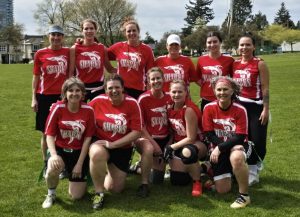What’s in your bag? If only they could talk…wait. What?
The Process of Redesigning “What’s in Your Bag”
Redesigning the “What’s in Your Bag” task provided an opportunity to integrate multiliteracies as discussed by Dobson and Willinsky (2009) and the New London Group (1996). This task was more about perspective-taking and giving my items a ‘voice,’ which added a dynamic and engaging element to the exercise.
I began by rethinking the original task and envisioning how the items in my bag could be given a voice. This wasn’t just about what the items say about themselves but also what they might indirectly reveal about me. This small yet significant detail had been overlooked in the original assignment.
A colleague of mine had used ChatterPix for a nutrition assignment for her Grade 4/5 class, where the food (now characters) were given a voice to talk about their nutritional value and benefits. Inspired by her innovative approach, I decided to apply a similar technique to the “What’s in Your Bag” task. This was an interesting challenge since ChatterPix videos are limited to 30 seconds and can only be used on my iPhone.
As I worked through the process, I realized it was going to take longer than I thought. After creating 27 clips, I had to airdrop all of them to my Mac and then put them together using the QuickTime Player app. Additionally, I used PicCollage to have both my personal and professional phones on one screen to help create a discussion.
Creating a clever script for each of the items was probably the most challenging part for me. I wrote the script out to ensure a more fluid result, focusing on the elements of linguistic design, considering delivery, tone, vocabulary choice, and voice to ensure the items’ voices were engaging and appropriate. Incorporating sound effects further enhanced the storytelling aspect and made the content more immersive.
Dobson and Willinsky (2009) highlight the importance of digital literacy in navigating the complexities of contemporary information society. This task required me to utilize various digital tools, such as ChatterPix and QuickTime, to create and share my audio recordings. By incorporating an audio component, I moved beyond mere textual and visual representation, enhancing the storytelling aspect and making the content more engaging.
Mode-changing proved beneficial for this altered perspective. Taking the same image and objects and adding to the overall story by examining them in a different light with a different intention enriched the exercise. This practice is advantageous in many situations.
Incorporating an audio component aligned with the New London Group’s emphasis on multimodal literacy, which includes linguistic, visual, audio, spatial, and gestural modes of meaning. This holistic approach helped create a richer, more engaging learning experience. According to the New London Group (1996), redesigning isn’t about replicating existing designs or merely being creative; it’s about transforming the original design. Transforming Task 1 involved reimagining how the items in my bag could tell a story and provide insight into my personality and daily life.
Redesigning the “What’s in Your Bag” task allowed me to integrate multiliteracies and digital literacy, making the task more engaging and reflective. By giving my items a voice and utilizing various digital tools, I was able to enhance the storytelling aspect and align with contemporary educational practices. This process not only made the task more enjoyable but also demonstrated the importance of perspective-taking and multimodal literacy in modern education.
References
Apple Inc. (2022), Quick Time Player (Version 10.5). [Mobile App] App Store. https://support.apple.com/en-ca/106375
Cardinal Blur Software, Inc. (2020). PicCollage: Photo Video Editor (Version 8.38.1). [Mobile App]. App Store. https://apps.apple.com/us/app/piccollage-photo-video-editor/id448639966
Dobson, T. M., & Willinsky, J. (2009). Digital Literacy. In D. R. Olson & N. Torrance (Eds.), The Cambridge Handbook of Literacy (pp. 286–312). chapter, Cambridge: Cambridge University Press.
Duck Duck Moose, Inc. (2021). ChatterPix (Version 1.4.1). [Mobile App] App Store. https://apps.apple.com/us/app/chatterpix-duck-duck-moose/id734038526?ign-mpt=uo%3D4
New London Group. (1996). A pedagogy of multiliteracies: Designing social futures. Harvard Educational Review, 66(1), 60-92.


 .
.  .
. 




